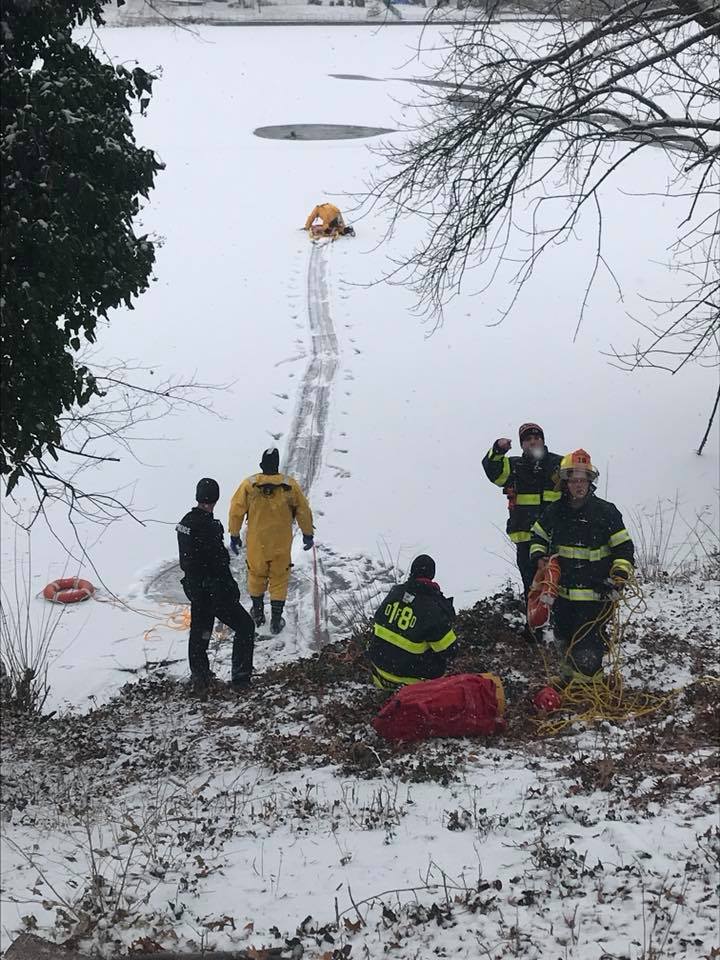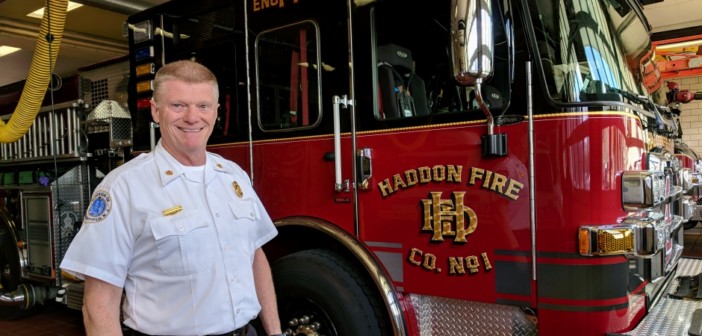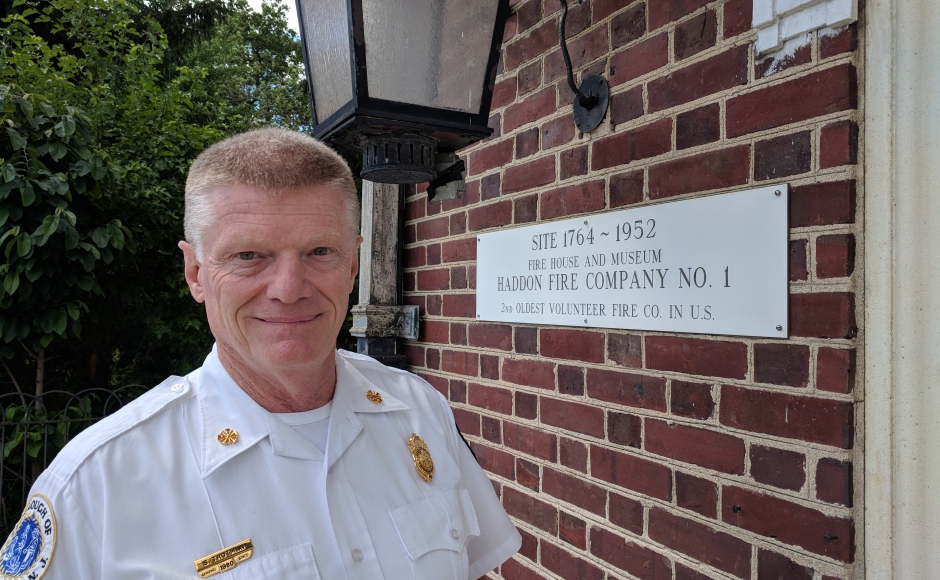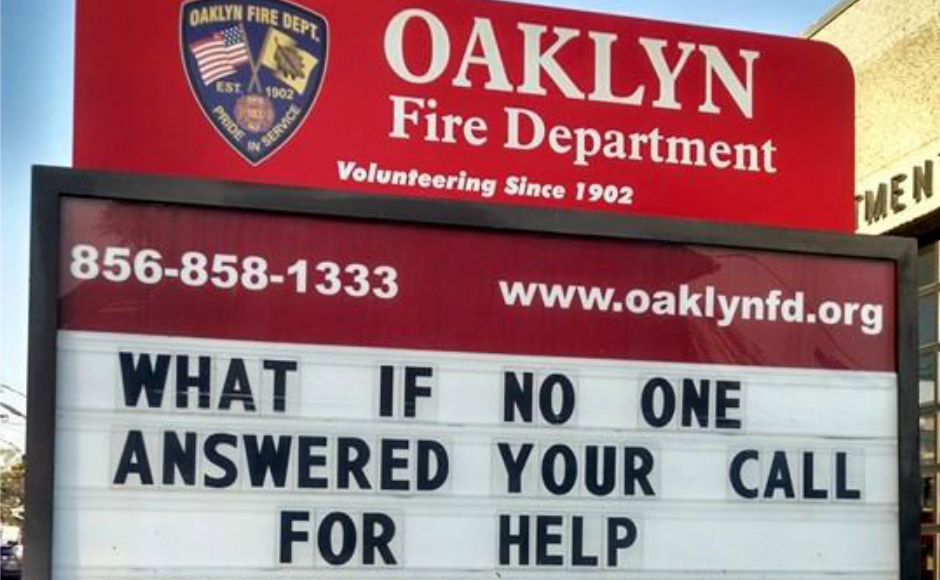Volunteer fire companies save taxpayers some $47 billion nationwide, but departments are having an easier time raising funds for equipment than finding people to staff their operations.
Haddon Fire Company is the second-oldest continuously operating volunteer fire service in the country.
Established in 1764, the department historically was staffed by borough residents and local businesspeople who were often able to cut out early in the event of an emergency.
Today, however, only about half of its 38-member roster is staffed locally. That’s due to a shift in departmental regulations that welcomes recruits from neighboring Cherry Hill, which staffs a professional fire service.
It’s also due to shifting demographics. Haddonfield has trended decidedly more white- than blue-collar in the past few decades, as median home values have approached the half-million-dollar mark, and median household incomes have approached $140,000 annually.
With homes that cost more to occupy and salaries commensurate with professions that demand the bulk of employee’s schedules, there’s little left over with which to volunteer. Many members are young, in their early 20’s, and have time to dedicate to the cause.
But staffing the department during daylight hours is still the biggest hurdle that Haddonfield Fire Chief Sam Trotman faces.
“We get the support from the borough 100 percent, and we have the support of the community for our fund drive,” Trotman said. “We have all the equipment that we need, but that equipment always needs to be replenished.”
Finding volunteers with a passion to help others, however, is a harder ask.
“We’re getting by,” Trotman said. “Like everywhere else across the country, I see decline. Times have changed; people’s lives have changed. It’s just the way it is.”
In Oaklyn, Fire Chief Scott Cairns has seen a lot of the same problems for years.
Cairns has a roster comparable in size to Trotman’s, but at its core are 15 or so firefighters upon whom he very regularly depends, and “the rest are intermittent.”
“Extra time is dwindling,” Cairns said;
“both parents are working.
“It’s very hard to get someone to join [the fire service]who has a job, career, or established family.”
That leaves young people, often right out of high school, who aren’t guaranteed to stay in town. Cairns recalled a handful of firefighters that were trained through the department who moved out of the area and took those skills with them.
“Eventually, volunteer service could become unsustainable with the training involved, and the lack of time people have to put into training,” he said. “This is probably leading to some kind of paid staffing, like what happened in the EMS service over the past 10 years.”
One of the major hurdles is the expense of staffing a department. It can cost anywhere from $5,000 to $7,000 per firefighter for basic training, turnout gear, and air packs. Training from the Camden County Fire Academy costs about $500 for a basic course, but the education is continuous, and the only difference between career and volunteer firefighters at the academy is that professional staff are trained on the clock.
“Retention is hard, recruitment is hard,” Cairns said. “There’s never too many [volunteers].”

Oaklyn Fire Department rescues a trapped dog from the Frozen Newton Creek. Credit: Oaklyn Fire Department.
The Oaklyn Fire Department, like the others in its service area, responds to calls in every community it borders.
That means it aids its neighbors when regional all-hands calls go out, and is aided in turn.
Staff might provide backfill coverage when other towns are on calls, but even when his firefighters aren’t in the field, there’s always a need to check equipment or handle office work, Cairns said.
“Calls can be 10 minutes or three hours; you don’t know,” he said.
His own level of involvement as chief can vary from five to 20 hours a week; in his day job, Cairns is a Cherry Hill police officer.
Like a lot of shift work, it’s not an uncommon career path to the fire service.
“We have [volunteer firefighters]doing all kinds of jobs [during the day]—police, EMS, nurses, part-timers, office workers,” Cairns said.
In fact, the dearth of staffing in the national volunteer fire service is a cause for concern throughout the United States, said Kimberly Quiros, Chief of Communications for the National Volunteer Fire Council (NVFC). Volunteer counts for 2016 and 2017 are at the lowest recorded levels since the National Fire Protection Association began the survey in 1983, and they still account for 65 percent of the national fire service.
“A lot of communities can’t afford to have the [paid]staff,” Quiros said. “The trucks cost money, the gear costs money, and then if you put the staff on top of that, a lot of these small, rural communities don’t have that money.”
NVFC community surveys about the drop in volunteerism in the fire service have returned a variety of concerns, from time demands and training requirements to increasing call volumes and sociological issues. That’s led to departments rethinking their approach to volunteerism, and the council is hoping to help them shape the message through its ‘Make Me a Firefighter’ campaign, Quiros said.
“Raising awareness in the community of the need for volunteers is something that departments don’t always do,” she said. “We found a majority of people didn’t know their department’s volunteer, or that they can step up and serve.
“If we don’t have enough volunteers, are we going to start not responding to calls?” Quiros said. “The community needs to be aware of these challenges because it’s the community that has the power to change this.
“If this decline continues, they’re going to have to have different expectations of the fire department.”
Please support NJ Pen with a subscription. Get e-mails, or follow us on Facebook, Twitter, and Instagram.







